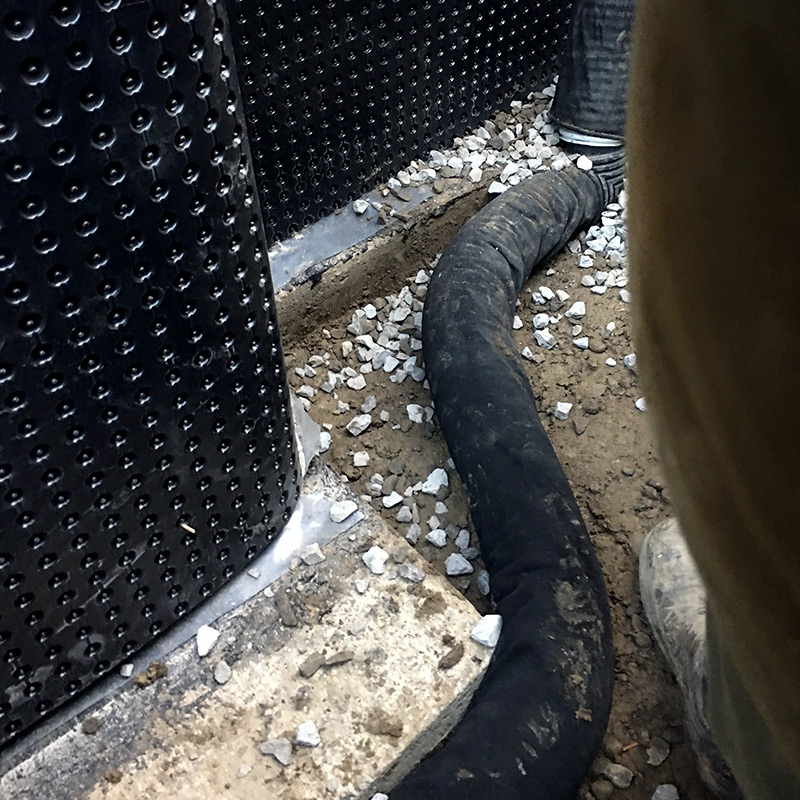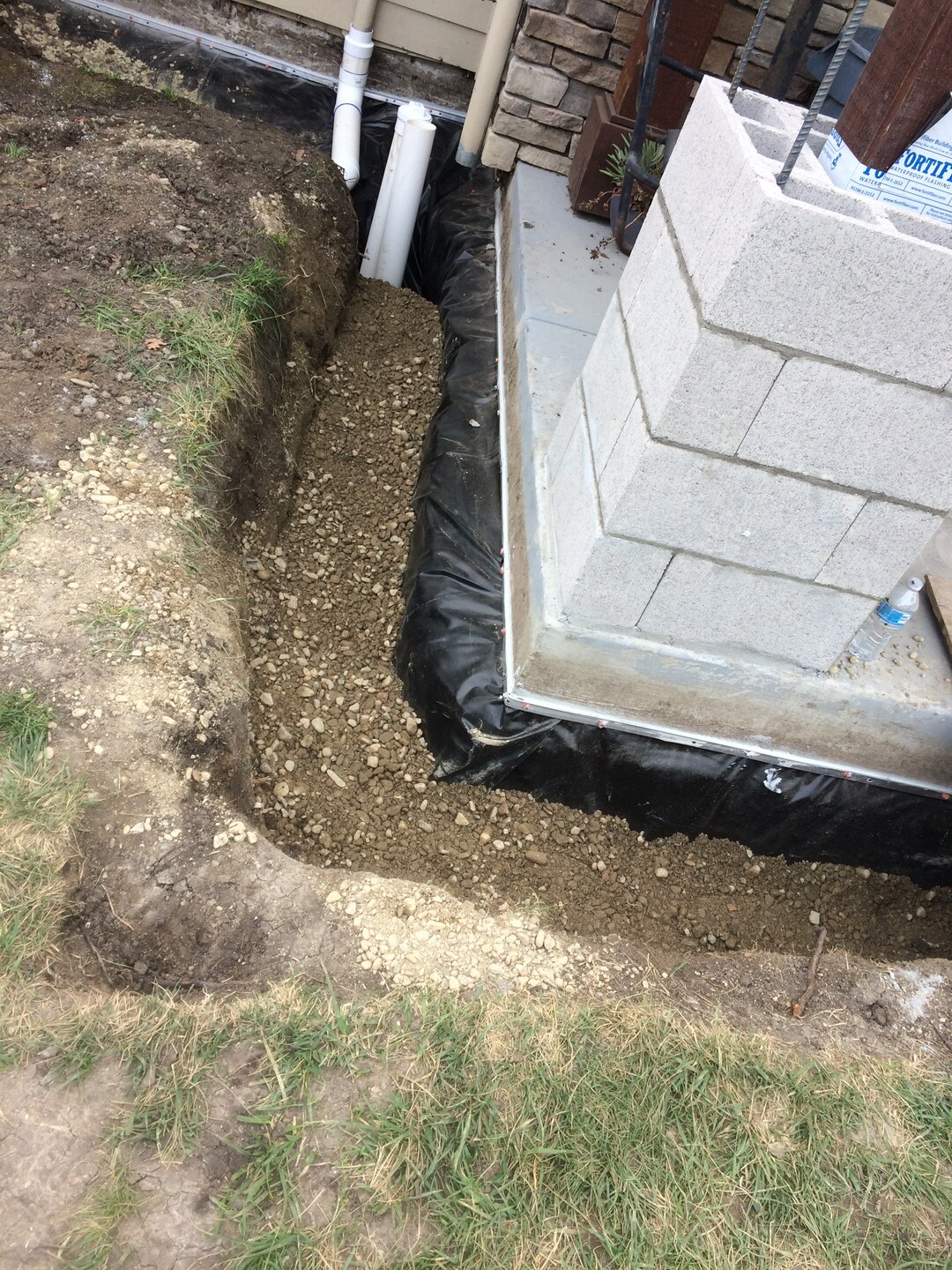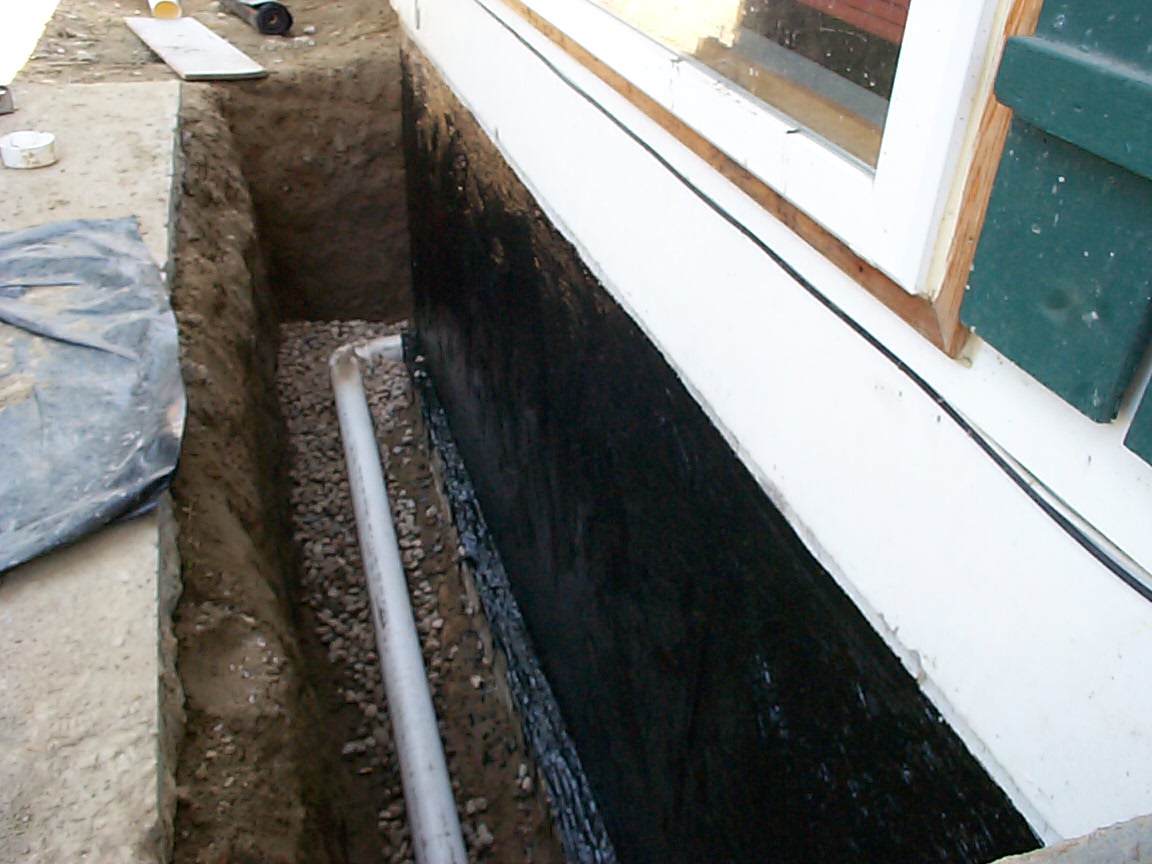Footing Drain Servicesin Grosse Pointe Farms MI
Footing Drains to Ensure Solid and Dry Foundations
We Are Locally Owned & Operated For Over 37 Years
Contact Us Today!
We Serve Businesses In And Around The Following Cities:
About Footing Drain Services
Introduction: Understanding the Importance of Footing Drains in Commercial Properties
The foundation of any robust construction lies in its ability to withstand moisture and water buildup. In essence, footing drains form a critical part of maintaining the integrity of commercial properties. Positioned at the base of your building’s foundation, a properly-installed footing drain offers an essential layer of protection, safeguarding your structure against the detrimental impacts of water damage. In regions like Grosse Pointe Farms, where weather patterns can bring unpredictable precipitation, having an effective and well-maintained footing drainage system becomes a pillar of effective property management. This comprehensive guide aims to highlight the process, benefits, and real-world applications of a footing drain.
Core Components and Functionality of Footing Drains
Commonly referred to as foundation footing drain systems, these components predominantly work towards diverting water away from your building’s foundation. Essentially, an exterior footing drain is positioned on the outside of the foundation, right against the footing. Its objective is to carry away any water that accumulates adjacent to the foundation, which it does so with extreme efficiency, preventing any potential seepage into your basement.
A traditional footing drain comprises a perforated drain pipe surrounded by a layer of gravel or crushed stone. This pipe must be sloped correctly to encourage natural water flow away from your building — a process often mastered by professionals like D&J Contracting. For commercial properties in Grosse Pointe Farms and its surroundings, these drains tackle both the menace of groundwater and surface runoff, averting potential damage to basement walls and property foundations.
The Crucial Benefits of Employing a Footing Drain System
The benefits of a strong footing drain system are multifaceted and immediately evident in protecting your building’s structural integrity. One primary advantage is preventing hydrostatic pressure buildup leading to structural damage. By efficiently rerouting water, footing drains protect your basement and foundation from moist conditions, limiting potential vulnerabilities to mold growth, cracking, or disintegration over time.
Another often overlooked benefit lies in the system’s ability to aid in the lifespan extension of your commercial property’s foundation. Damp conditions can significantly accelerate aging and degradation of structural materials; hence by mitigating the onset of these conditions, footing drains ensure your building’s structural health and longevity.
Real-World Scenarios and Practical Insights
There are countless instances where sound footing drainage systems have thwarted potential disasters. For instance, a large-scale organization in Grosse Pointe Farms was experiencing frequent basement flooding. It was only after the introduction of an expertly designed footing drain system by D&J Contracting that they managed to eliminate this recurrent issue. Once in place, the footing drains prevented water buildup around the foundation, effectively averting further basement flooding incidents.
Another local enterprise required a footing drain repair following several erratic incidents of water seepage into their basement. The subsequent implementation of a new perimeter footing drain resolved the issues, proving once again the invaluable role these systems play in preserving commercial property assets.
Considering the potential cost implications tied to foundation damage, the importance of regular checkups and maintenance, including potential footing drain excavation or replacement, becomes quite evident. Engaging with qualified services like D&J Contracting often proves a smart, future-proofing decision for your commercial property.
Navigating the Footing Drain Installation Process
Professionals adept in footing drain installation consider an assortment of factors, including soil type, landscape gradient, and local climate. These considerations determine the specific types of pipes and the amount of gravel required for your footing drains basement system. During the process, they’ll conduct a footing drain excavation, install the piping along the foundation’s exterior, and cover the drain with gravel to maintain the pathway clear. D&J Contracting has, over the years, perfected this process, offering a wealth of experience and expertise in footing drain installations in Grosse Pointe Farms.
Keeping the integrity of commercial properties intact
Efficient footing drains are a game-changer when it comes to maintaining the integrity of your commercial properties. In the face of potential damages due to water and moisture build-up, footing drains offer an unfailing defense, protecting your foundation from untold future damage. Investing in a reliable foundation footing drain system ensures the longevity of your building, safeguarding your property against both short-term mishaps and long-term degradation.
The expertise of D&J Contracting in designing and implementing these drains provides an extra layer of assurance. With a solid footing drainage system, commercial property owners can rest easy, knowing their basements and foundations have the best protection against water hazards. As such, whether you’re seeking a footing drain repair, a replacement, or even a completely new installation, your commercial property will undoubtedly benefit from integrating a strong footing drainage system.
Footing Drain Services Gallery


Call Us Today to receive your Free Quote for
Footing Drain in Grosse Pointe Farms
Serving: Grosse Pointe Farms, Michigan

About Grosse Pointe Farms, Michigan
The area that would become Grosse Pointe Farms was originally incorporated as the Village of Grosse Pointe in 1879. By 1889, the village extended from land just above Provencal Road in the northeast to Cadieux Road in the west. In 1893, the portion of the village east of Fisher Road broke off and incorporated as the Village of Grosse Pointe Farms after a dispute over the location of a tavern. It was not until 1949, however, that the village incorporated as a city.
The U.S. Postal Service operates the Grosse Pointe Post office in Grosse Pointe Farms.
According to the United States Census Bureau, the city has a total area of 12.32 square miles (31.91 km), of which 2.75 square miles (7.12 km) is land and 9.57 square miles (24.79 km) is water. The water is part of Lake St. Clair.
The Farms has a more varied topography and streetscape than the other southern Grosse Pointes. While Grosse Pointe and Grosse Pointe Park are built on a standard street grid and are basically flat, Grosse Pointe Farms is partially built on the same grid flowing out of Detroit, but also features districts with irregular, curving street paths. A low but noticeable ridge runs through the center of the city. The Farms also contains the “point” in Grosse Pointe, where, just east of the Grosse Pointe War Memorial, there is a large bend in the lakeshore, such that those on the shoreline face east, instead of south, as they do when on the shoreline of neighboring Grosse Pointe, closer to the entrance of the Detroit River.
The cityscape varies widely, with large sections of old homes ranging from bungalows to mansions, and a few newer sections with ranch houses or luxury homes built on subdivided estates. The Farms has a downtown on Kercheval Avenue combining historic buildings with newer, neo-traditional storefronts.
| Census | Pop. | Note | %± |
|---|---|---|---|
| 1900 | 817 | — | |
| 1910 | 862 | 5.5% | |
| 1920 | 1,649 | 91.3% | |
| 1930 | 3,533 | 114.3% | |
| 1940 | 7,217 | 104.3% | |
| 1950 | 9,410 | 30.4% | |
| 1960 | 12,172 | 29.4% | |
| 1970 | 11,701 | −3.9% | |
| 1980 | 10,551 | −9.8% | |
| 1990 | 10,092 | −4.4% | |
| 2000 | 9,764 | −3.3% | |
| 2010 | 9,479 | −2.9% | |
| 2020 | 10,148 | 7.1% | |
| U.S. Decennial Census | |||
As of the census of 2010, there were 9,479 people, 3,718 households, and 2,770 families residing in the city. The population density was 3,446.9 inhabitants per square mile (1,330.9/km). There were 3,952 housing units at an average density of 1,437.1 per square mile (554.9/km). The racial makeup of the city was 95.4% White, 1.8% African American, 0.2% Native American, 1.3% Asian, 0.4% from other races, and 1.0% from two or more races. Hispanic or Latino of any race were 2.0% of the population.
There were 3,718 households, of which 33.7% had children under the age of 18 living with them, 66.0% were married couples living together, 6.2% had a female householder with no husband present, 2.3% had a male householder with no wife present, and 25.5% were non-families. 23.0% of all households were made up of individuals, and 12.3% had someone living alone who was 65 years of age or older. The average household size was 2.55 and the average family size was 3.02.
The median age in the city was 45.1 years. 25.8% of residents were under the age of 18; 4.8% were between the ages of 18 and 24; 19.5% were from 25 to 44; 32.6% were from 45 to 64; and 17.5% were 65 years of age or older. The gender makeup of the city was 48.8% male and 51.2% female.
At the 2000 census, there were 9,764 people, 3,804 households, and 2,868 families residing in the city. The population density was 3,618.8 inhabitants per square mile (1,397.2/km). There were 3,937 housing units at an average density of 1,459.2 per square mile (563.4/km). The racial makeup of the city was 97.58% White, 0.65% African American, 0.11% Native American, 1.13% Asian, 0.11% from other races, and 0.42% from two or more races. Hispanic or Latino of any race were 1.11% of the population.
There were 3,804 households, of which 34.3% had children under the age of 18 living with them, 67.8% were married couples living together, 6.1% had a female householder with no husband present, and 24.6% were non-families. 22.3% of all households were made up of individuals, and 12.0% had someone living alone who was 65 years of age or older. The average household size was 2.57 and the average family size was 3.03.
Age distribution was 26.5% under the age of 18, 3.6% from 18 to 24, 23.4% from 25 to 44, 28.6% from 45 to 64, and 17.9% who were 65 years of age or older. The median age was 43 years. For every 100 females, there were 90.6 males. For every 100 females age 18 and over, there were 87.5 males.
The median household income was $100,153, and the median family income was $109,264. Males had a median income of $87,108 versus $53,241 for females. The per capita income for the city was $54,846. About 1.5% of families and 2.1% of the population were below the poverty line, including 3.1% of those under age 18 and 1.4% of those age 65 or over.
The community is served by Grosse Pointe Public Schools (GPPSS). Public schools within Grosse Pointe Farms include Père Gabriel Richard Elementary School, Kerby Elementary School, Brownell Middle School, and Grosse Pointe South High School. Along with Richard and Kerby, Monteith Elementary School in Grosse Pointe Woods serves a section of the city. All residents are zoned to Brownell. Almost all residents are zoned to GPS High, while those in a northwest section are zoned to Grosse Pointe North High School in Grosse Pointe Woods.
Saint Paul Catholic School is in Grosse Pointe Farms.
The Grosse Pointe Public Library operates the Central Branch in Grosse Pointe Farms.
Call Us Today to receive your Free Quote for
Footing Drain in Grosse Pointe Farms
Related Services in Grosse Pointe Farms, Michigan
We Serve Businesses In The Following Zip Codes:
48007, 48015, 48021, 48026, 48035, 48036, 48038, 48042, 48043, 48044, 48045, 48046, 48047, 48048, 48050, 48051, 48066, 48071, 48080, 48081, 48082, 48083, 48084, 48085, 48088, 48089, 48090, 48091, 48092, 48093, 48098, 48099, 48225, 48230, 48236, 48310, 48311, 48312, 48313, 48314, 48315, 48316, 48317, 48318, 48397